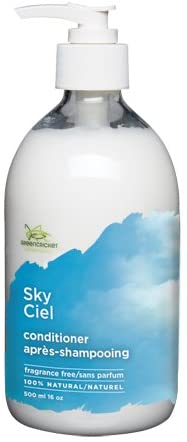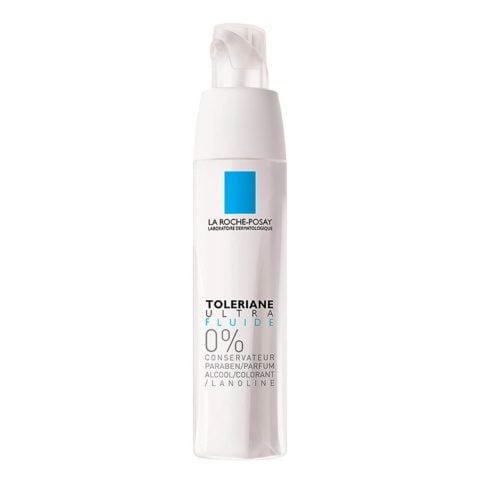A Product Elimination Diet Could Solve Your Dry, Irritated Skin Issues
When I recently woke up with sore, swollen, dry, red eyelids (the whole gamut of skin discomfort symptoms), I did what any millennial would do: ask for help on social media. The following is an edited list of the recommendations I received: take vitamin D, don’t drink wine, eat non-inflammatory foods, try acupuncture, get more sleep, go vegetarian, stop wearing makeup, use Aveeno, IS Clinical Sheald, Province Apothecary Balm, Cetaphil, vitamin E, La Roche Posay Lipikar line, La Roche Posay Toleriane line, etc., etc., etc. Then I did what I should have done in the first place: contacted Dr. Sandy Skotnicki. (This is not to say that any of those recos weren’t good, it was just a lot.)
The Toronto-based dermatologist is the foremost skin allergy expert in Canada. When doctors have a patient with an allergic skin condition they can’t crack, they send them to Skotnicki. She literally wrote the book on managing sensitive and reactive skin and eczema. “So many people have these issues and they’re like, well, I didn’t do anything different. Why do I have this now? Where is it coming from?” says Skotnicki of her motivation for writing the tome on reactive skin. Read on for some of her recommendations.
Understand what you’re dealing with.
“There’s a continuum between dryness, eczema and dermatitis,” says Skotnicki. While the terms are often used interchangeably, eczema is something you’re born with or genetically predisposed to having and dermatitis is something that you can cause from external measures, like over washing or being allergic to something you come in contact with. The difference between regular ol’ dry, flaky skin and dermatitis is usually itchiness and persistence, i.e. how often you are experiencing it. If it’s itchy and persistent, “that’s when you can say there’s actually inflammation, which is the dermatitis,” says Skotnicki.
Start by protecting your skin barrier.
Let’s go back to the fundamentals: skin is a barrier. When you overdo it with washing, are in lower humidity environments and are exposed to dry air, like from indoor heating, you decrease that barrier. “Change how often you wash and what you wash with,” recommends Skotnicki. Skin is acidic, so avoid high pH products like true soaps. (Some better options are CeraVe and Cetaphil.) Don’t use excessively hot water and keep showers short – and no soaking in the bath.
Try the product elimination diet.
Skotnicki’s product elimination diet is exactly like doing Whole30, but for beauty products. “I have people round up all their products,” says Skotnicki, and she doesn’t mean just makeup and skincare. Get your face products, body products, hair products and laundry detergents together, and then stop using them. Yes, all of them. Swap them out for products Skotnicki has pre-approved and use those, and only those, for two or three weeks. (For a complete breakdown of the product elimination diet and the products Skotnicki recommends, view her website).
After two weeks, start re-introducing products one at a time and watch for any signs of irritation. The people who don’t respond to this product overhaul are the ones who really need to see a dermatologist. (For example if you have a condition like eczema or rosacea, says Skotnicki, you often need to still treat that to decrease the inflammation.)
“The waiting list for patch testing, or to see somebody like me, is months in Canada,” she says. The product elimination diet helps weed out people without true allergies or skin conditions that are just over-using products. And even if you do have a true skin condition, try the product diet anyway. “When you get to see us and you have already done this product elimination it’s helpful,” she adds. “Then we know you may be allergic to something and we need to patch test.”
If your eyelids, neck and ears are affected, look at your shampoo.
“Those three areas are classic shampoo distributions,” says Skotnicki. It’s common to see irritant dermatitis from shampoo in those areas, she says, because that’s where it washes off, and because the eyelids and neck are some of the thinnest skin on the body, which means the skin barrier is lower, and thus skin is more reactive.
“A lot of recalcitrant scaly eyelids are from shampoo,” she says. “I see a lot of people from other dermatologists that say they’ve changed everything [product wise], and I ask, well, did you change your shampoo? And as soon as they do they go, oh my god, my eyelids just cleared up.”
She points to a large study published last year in the Journal of the American Academy of Dermatology that looked at contact dermatitis in men and women between 1996 and 2006. The study found that contact dermatitis caused by personal care products is increasing in both men and women, albeit in different spots on the body. “In women, the increase is facial and it’s often haircare driven and the increase in men is on the legs and trunk caused by over-washing.”
Reconsider your diffuser.
“We’re seeing eyelid dermatitis as a result of essential oils and diffusers,” says Skotnicki. “If you put essential oil into a diffuser and it collects in the air, especially if it’s a smaller room, it can potentially irritate your eyelids.” Another big factor is fragrance. “There’s a lot of Instagram debate between chemists and perfumers that fragrance isn’t so bad,” says Skotnicki. “Fragrance is an irritant, which can lead to dry, flaky patches.”
As for me, I’ve swapped all of my products out for the below, which were all recommended on Skotnicki’s website. (I chose them based on what was available to overnight with Amazon Prime and things I already had in my personal beauty closet). It’s only been a week, but so far, so good.
The post A Product Elimination Diet Could Solve Your Dry, Irritated Skin Issues appeared first on FASHION Magazine.





